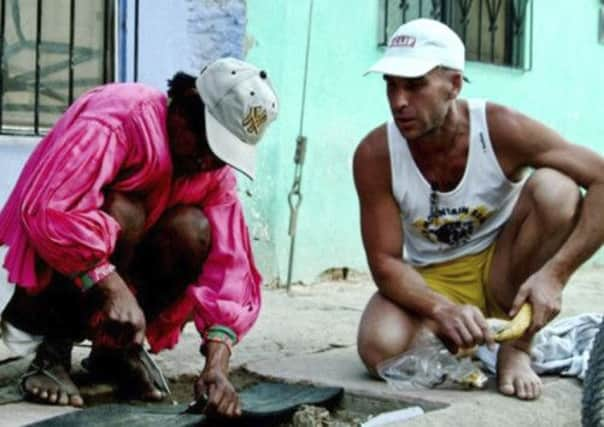Barefoot Ted knows what it takes to keep on running


The book kicked off a worldwide phenomenon of running without shoes and made Ted famous overnight.
He has a surname, by the way – it’s McDonald – but he goes by the name Barefoot. Or mostly just Ted.
Advertisement
Hide AdI know he’s in Hyde Park somewhere, but I’m concerned as to how I might recognise him when I spot an almost naked man – shaved bald, bare chest but for a large brass monkey pendant, veins bulging from his toned biceps, skimpy black shorts – sitting cross-legged on a bench. And, yes, he has bare feet too. I think I’ve found my man.
Having grown up in southern California – surfing country – going barefoot came naturally to him, and it was only when he started training seriously for a marathon, in his mid-thirties, that shoes entered the equation.
“I just couldn’t believe how hard it was,” he says. “I couldn’t run for more than an hour – I felt beat up. What running shoes ended up doing was disconnecting me from the feeling of running; good running is the ability to allow your feet to sense what’s happening beneath them. If you mask the feeling of impact, you end up running in a way that’s not human.”
His journey of discovery took him to Mexico, where Manuel Luna, one of the Tarahumara’s top runners, taught him how to make the sandals they wear made from old truck tyres. Back at home in his garage, Ted recreated the simple design, called his new sandals the Luna, and started sending shares of the profits back to his mentor. At the same time Born to Run went global and minimal shoes became the hottest trend in sport.
But, after a lifetime of running in built-up footwear, he says, we have lost the art of running the way we were designed to do it, and relearning that takes time. Who better to give me a masterclass than Barefoot Ted? “I like to think of barefooting – or the capacity to move well barefoot – as something like a language,” he says. “And every human being has the ability to learn a language.”
At its heart is the forefoot strike. He gives a simple example: if I am in my bare feet and he asked me to jump up and land, I would automatically land on my forefoot with knees slightly bent. If I landed on my heel, I’d probably injure myself, and it would certainly hurt.
Advertisement
Hide Ad“Normally a human being cannot run and land on their heel – it’s just so jarring,” he says. It also acts as a brake, slowing the runner down each time their foot lands. With a forefoot strike, you take a shorter stride. “With your foot landing closer to your centre of gravity, more on the ball of your foot, knees slightly bent, not only are you able to absorb the impact of the landing, it begins to become part of a recoil thing,” he says. “When you learn to run well in your bare feet you are creating an energetic wheel.”
The correct form is head above shoulders, core engaged, with a slight bend at the ankle. “The upper body is not bouncing or wavering from side to side. And when you run well you’re silent.”
Advertisement
Hide AdHe’s not a purist, he insists, and going barefoot is not a cure-all – injuries can still occur. “But what I am a fan of is self-experimentation. Human, you are not born broken. You are part of a long, successful line of experimentation that has led to you being absolutely perfect as you are. Before you decide to start fixing it, why don’t you see how it performs in its default position?”
His sandal may look like a flip-flop – an expensive one at that (it sells for upward of £69) – but it’s built for purpose. “You are able to adjust every aspect of it. The footbed is a Vibram material that ends up moulding to your foot perfectly. It has a Vibram sole that is very long lasting. And when the insole gets wet, the foot sticks to it.”
But, in the end, they are still a poor alternative to the real thing. “They remind you of what is the most awesome piece of footwear you ever owned,” says Ted. “And that’s your own foot.”